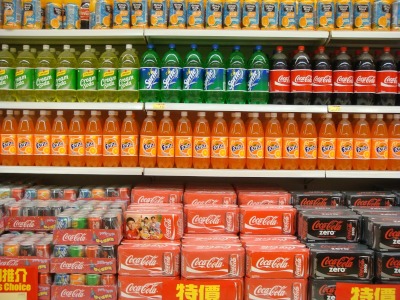Do you enjoy going to the supermarket? Whatever is your answer, supermarkets pretty much essential since they are the first place where we would go to do our shopping. That is the reason why they are among the most popular places on earth nowadays. The little groceries, as well as the greengroceries, dairy and butcher’s shops and all the specialty stores are being replaced by the big supermarkets, which offer us a huge selection from all the products categories in a single point of sale. The chance of doing your shopping at ease is not the only reason of supermarkets success. Here I am going to reveal you the secret marketing strategies applied by the majority of modern supermarkets. Are you ready to be astounded? After reading this article, shopping at the supermarket will never be the same again.
1- Threshold price: This is an old gimmik that you have probably already unmasked. However you keep falling for it. Since our mind is set to round down numbers, when we read 1,99 or 8,99 on the pricetags we perceive these numbers as if they were just “1” or “8”, so that the product that we are taking into account for our shopping seems cheaper than its real price value. If you don’t pay attention, you will have a bad surprise at the cash register!
2- The notorious 3×2: This type of offer is becoming increasingly popular nowadays, especially in the discounts. Our mind reeds this specific offer as “products for free”, whereas the real meaning of it is “33% of discount”, which is far from the more attractive 50% discount, or even further from the most desireable 75%.
3- The pitiless “buy one, the second is discounted”: This kind of discount is applied to big package products. If you buy two packages of that product, the second one is usually marked down 50%. The illusion of the 50% discount might make you forget that the first package is full price and, besides, you don’t need such a big quantity of that product. In case this is not enough to dazzle you, the offer is so well promoted that it seems to suggest you that the discount is applied to all the packages. So, there is a chance that you will buy one full-priced package, because you thought it was discounted. Fooled twice.
4- Products display: The most profitable products are placed at the eyelevel of the likely consumer. So, if we take into account the sweets department, the most popular and profitable candies will be placed at kids eyelevel. Colors are also an essential factor. We have already talked about Itten’s theories about color pairing in the article Visual perception. Well, if applied, Itten’s principles have the power to draw you down the aisles and make you choose one product over another, thanks to the use of bright and gaudy colors and the contrast between them.
5- Primary need products…where are you?: Have you ever wandered up and down the supermarket desperately looking for that very ordinary product which is also the only reason why you ended up in there? And have you ever wondered why it’s always the common e banal products, the primary needs products, so hard to find? The answer is that supermarkets don’t want you to find them. Milk, eggs, sugar, flour are all placed in the most unthinkable and hidden places, also very far one from the other. The aim is exactly to make you wander through the different aisles, in the hope that the attractive shelves will convince you to buy a bunch of staff that was not in your list.
In less than no time, your cart will be filled up and maybe by the time you find the milk, there will be no room for it.
6- Big charts: Nowadays supermarkets provide us with charts that are bigger than in the past. The intention is pretty clear: more room, more products. The big chart warp our perception of quantities, so that we cannot realize the amount of things that we are actually buying.
7- No shopping with an empty stomach: The bakery department always spreads tempting smells and, for this reason, it is usually placed in a strategic position. The scent of fresh bread whet our appetite. Consequently we are more eager for buying grocery products. The advice is not to do the shopping on an empty stomach.
8- Cross-selling: This brilliant strategy was first applied by Apple and it revealed to be very successfull. Supermarkets use it by putting “complementary” products near to each other as a reminder to the buyer that he/she can’t buy one without the other. For example, it is very common to see crisps and salty snacks in the same aisle of beers and fizzy drinks.
9- Multi-use products: Supermarkets sometimes base their advertisment campaigns on “multi-use products”. This type of products are useful to enhance the revenue from regular customers, by incentivating them to spend more.
10- Tempting cash registers: Why is there also a huge display of candies, chewing gums, batteries and tiny chocolate bars at the cash register? This category of products is also known as impulse buying products. It consists of all those products that we usually don’t write in our shopping lists, because they are not really necessary. However, when we happen to queue at the cash register, we have enough time to get convinced in buying those products, without care of the price, which is always very high.
Will you do your shopping with a more suspicious and aware attitude now?

SOURCES: https://marketingaround.it/strategia/15-tecniche-di-vendita-dei-supermercati/
https://www.tweak.com/blog/10-simple-supermarket-marketing-strategies
https://diarioretail.com/marketing-strategies-for-supermarkets/
